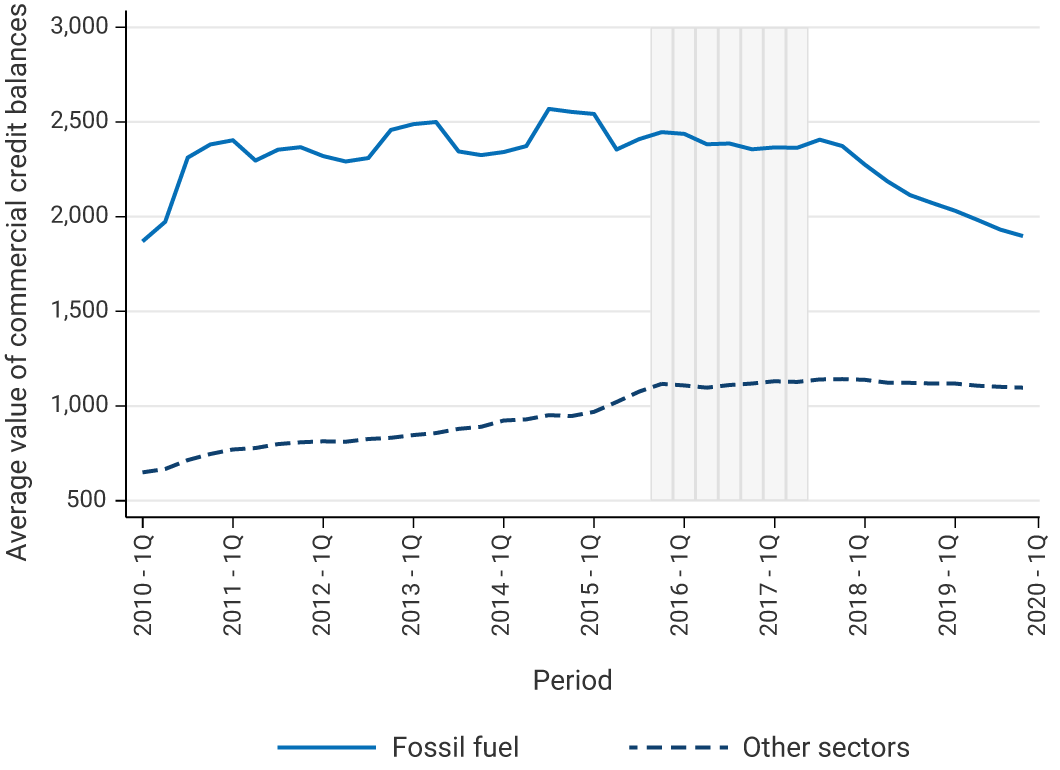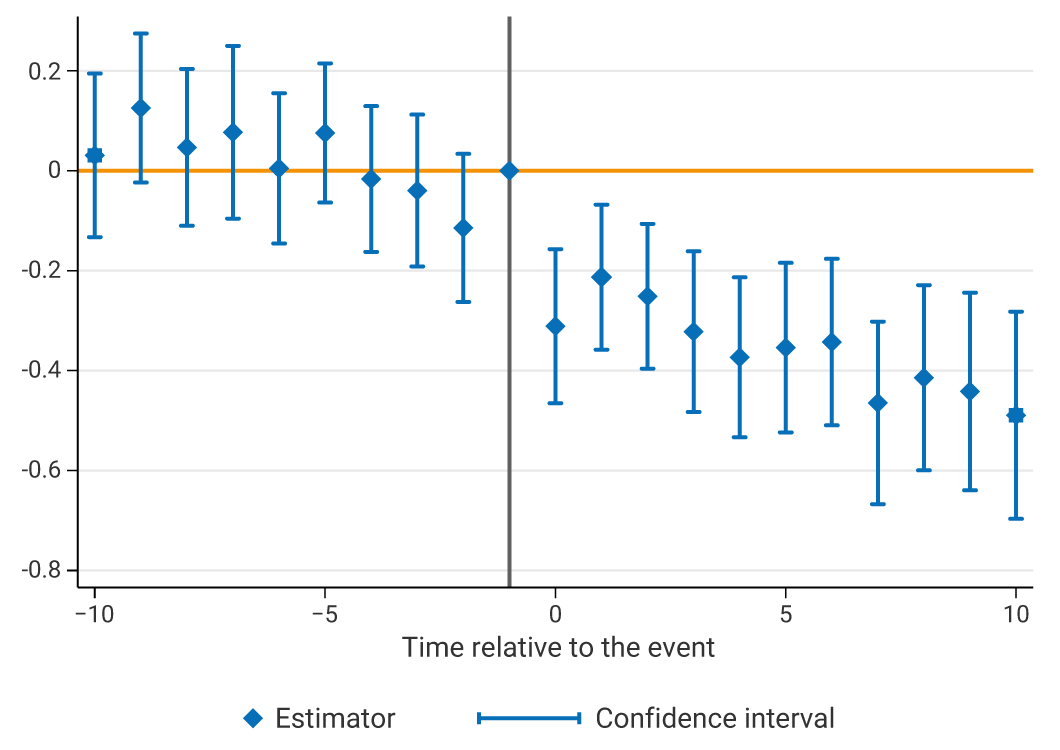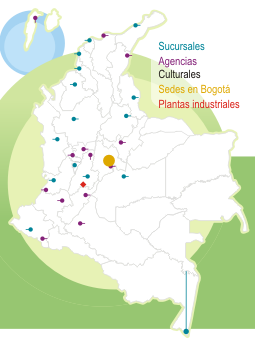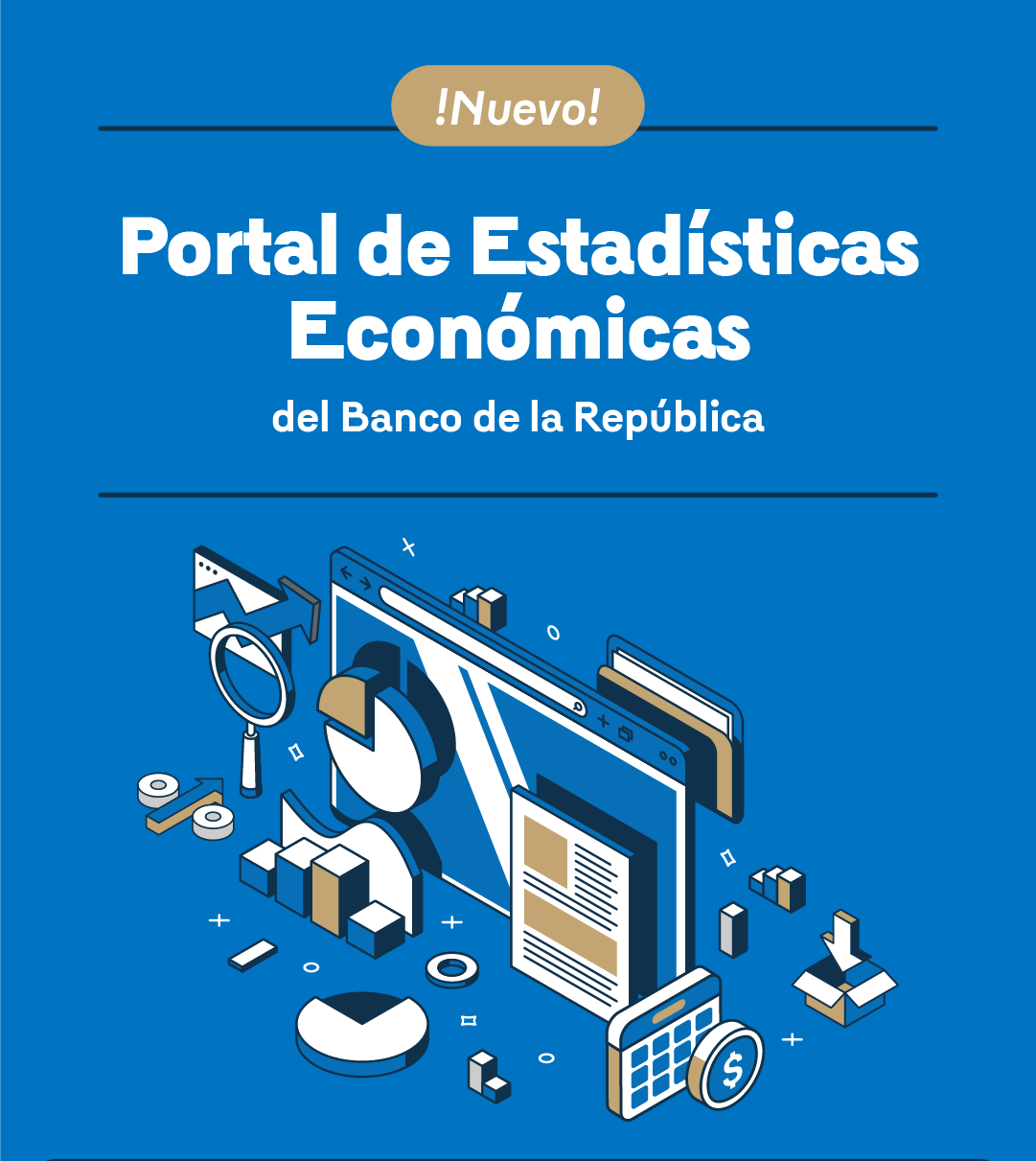In 2015, Colombia signed the Paris Agreement, thus committing to reduce the exploration, exploitation, and consumption of fossil fuels such as coal, natural gas, and oil. A consequence of this agreement is the risk of turning fossil fuel-related assets into stranded assets, whose value would decrease as they cease to be operational. This risk has financial implications for firms in the sector, which are also macroeconomically relevant given their importance in the Colombian economy.
In a recent paper published (Only in Spanish) in Banco de la República's Working Papers on Economics series (Borradores de Economía), senior economist Camilo Bohórquez and co-authors from the Graduate Institute of Geneva estimate the effect of signing the Paris Agreement on credit to Colombian fossil fuel firms. To contextualize the issue under study, Graph 1 compares the average value of commercial credit balances per firm for fossil fuel firms vis-a-vis firms in other sectors. The data used includes approximately 1,500 fossil fuel firms that had credit relationships with banking institutions during the study period, out of a total of around 235,000 firms across all economic sectors.
As can be seen, after the ratification of the Agreement in the second quarter of 2017, the average credit balances per firm from Colombian banks to fossil fuel firms began to decline, while it remained relatively stable for firms in other sectors. It is also noteworthy that the average value of commercial credits to fossil fuel firms is much higher than that of credits to firms in the rest of the economy.
Graph 1. Evolution of the Average Credit Balances per Firm, 2010-2019

Note: The grey area represents the period between signing the Paris Agreement (third quarter of 2015) and its ratification by the Colombian Congress (second quarter of 2017). Values are in millions of constant 2018 COP.
To estimate the impact of the Agreement more accurately, the authors calculated its effect on commercial credit flows to fossil fuel firms relative to credit flows to firms in other sectors of the economy. Specifically, they compared the average quarterly change in credit to affected firms with the average change in credit to firms in other sectors in the periods immediately before and after signing the Agreement. It is worth noting that international oil and coal prices remained relatively stable during the study period.
The results of this calculation, exhibited in Graph 2, display the difference in the change in commercial credit balances between fossil fuel firms and firms in other sectors around the ratification of the Agreement in 2017. As illustrated, this difference, which was close to zero before the ratification of the Agreement, became negative afterwards. The estimate indicates that the change in credit balances to fossil fuel firms fell by almost 50%. Moreover, there is evidence that the impact is permanent, although medium-term results may be influenced by other factors. The paper also shows that the effects of the Agreement vary by firm size, being more pronounced for firms with lower capitalization or lower asset values.
Graph 2. The Effect of the Paris Agreement on the Quarterly Change in Commercial Credit to Fossil Fuel Firms.

Note: Dependent variable: logarithm of credit balances at constant 2018 prices. Reference period: third quarter of 2016. The vertical blue lines represent the 95% confidence interval.









































































